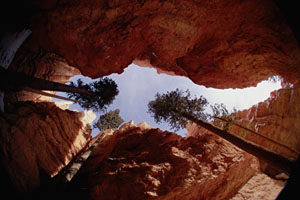|
|
Digital Photography Essentials #001"Image Sensor Size and Field of View"
note by
Dick Merrill (Foveon)
|
A camera's field of view is determined by the focal length of the lens and the size of the image sensor capture area. A short focal length lens reduces the size of the image projected onto the sensor, resulting in more of the scene being captured in a given sensor area, thereby increasing the field of view (see figure 1c). Increasing the image sensor area will also increase the field of view, simply by allowing a larger area of the projected image to be captured (see figure 1b). 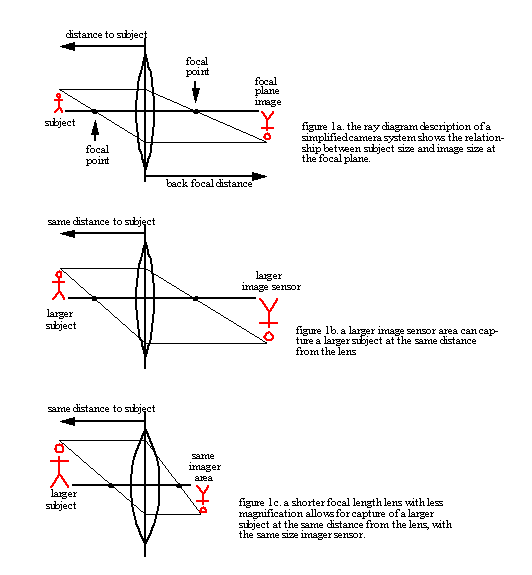 In digital SLR cameras, the term 'focal length multiplier' is often used to describe the size of the capture area of an electronic image sensor, relative to the traditional 35 mm film capture area, which is 24 mm x 36 mm. For example, a digital camera with a focal length multiplier of 1.7X has an actual imager size of 14.1 mm x 21.1 mm. If a digital camera with a 1.7X focal length multiplier is used with a 50 mm focal length lens, it will have the same field of view as a 35 mm film camera with an 85 mm focal length lens. For a photographer making the transition from film to digital, this can be a problem because all of his familiar lenses will effectively have the focal length multiplied by 1.7X. If the photographer does not already have lenses that can achieve the desired field of view with the smaller sensor field, new lenses must be purchased, adding to the cost of entry into digital photography. Recognizing this problem, some camera manufacturers do offer digital SLR cameras with 24 mm x 36 mm field size, however the larger sensors are more expensive. Figure 2 shows how sensor cost increases with diagonal dimension. The equation used is the Poisson relationship, which is the most commonly used model for silicon die cost. The Poisson relationship describes the expected number of defects in a chip of a given size, based on some average number of defects per unit area on the wafer. The plot in figure 2 shows that die cost increases rapidly for very large die area approaching the 35 mm image sensor format size (defect assumptions being held constant).
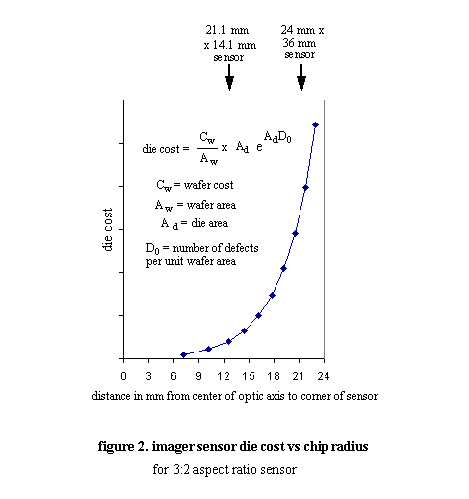 The alternative to using a camera with a larger, more expensive sensor, is purchasing a lens with a shorter focal length (assuming one exists in the lens family). In this case the issue is lens performance of the long focal length lens with the large sensor (as in figure 1b), vs. performance of the short focal length lens with the smaller sensor ( as in figure 1c). It is possible to estimate this trade-off from MTF (Modulation Transfer Function, a measure of how contrast falls off as spatial frequency increases) curves for the long and short focal length lenses. Figure 3a shows that the contrast in the corner of the field with the long focal length lens used with the large sensor, is worse than for the shorter focal length lens used with the smaller sensor, as depicted in figure 3b. This example assumes that pixel pitch is constant, so that inter-pixel contrast at a given spatial frequency (lpm) is the same. 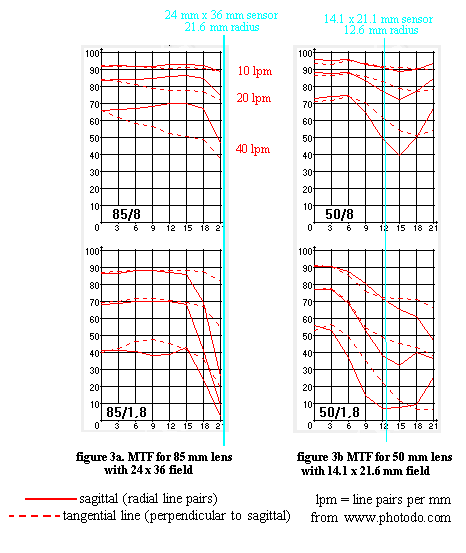 Another incentive for increasing sensor area is resolution. For a given pixel size, a larger image sensor area means more pixels, and therefore more image detail (pixel size trade-offs wil be discussed in "Digital Photography Essentials # 2, Pixel Size"). Figure 4 shows a list of common optical format sizes and associated applications. The largest format size shown in figure 4 is the 24 mm x 36 mm size used in "35 mm" film cameras. It is interesting to consider whether the popular 35 mm optical format will survive the transition to digital, or whether a new format, such as the 4/3 inch format, will emerge to dominate in the age of digital photography. A smaller format would allow for lighter and cheaper lenses, with the same field of view, depth of field, and other optical characteristics as the historical 35 mm family of lenses. 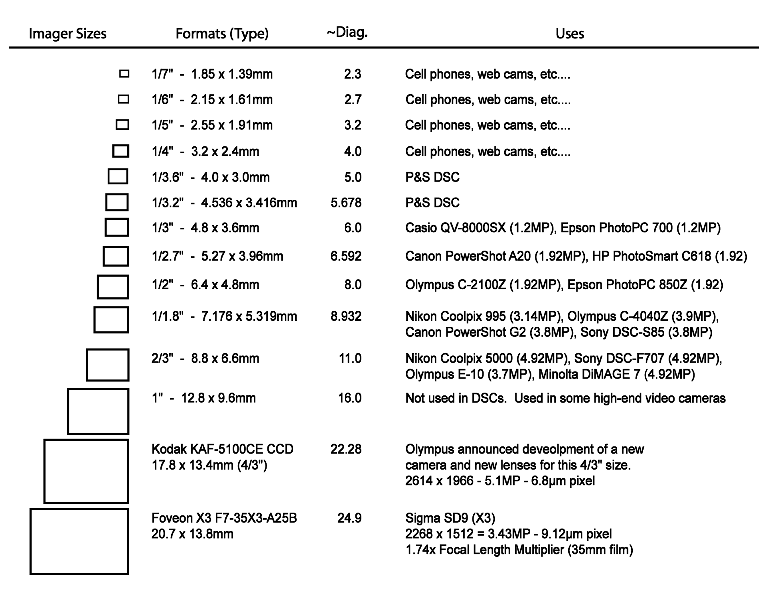 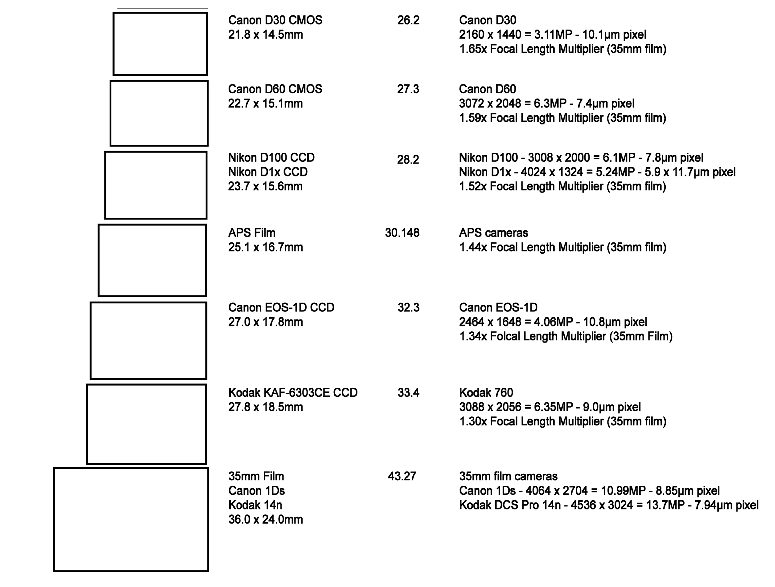 common image sensor sizes
|
| For Comments post in our News Group |





